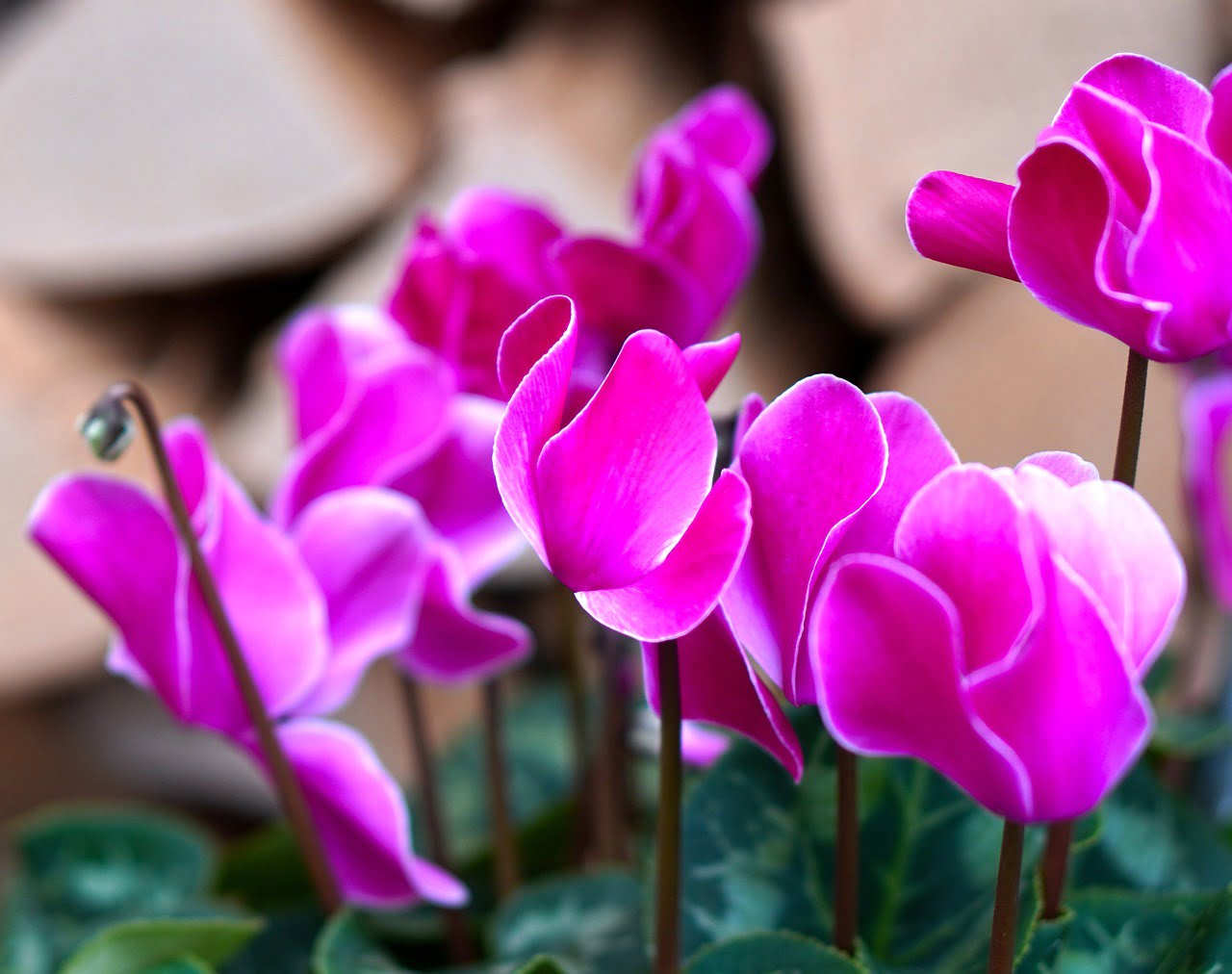
Cyclamen and Planting: A Guide to Growing Beautiful Cyclamen
Cyclamen, with their delicate petals and vibrant colors, have long been a favorite among garden enthusiasts. If you’re looking to add a touch of elegance to your garden or indoor space, learning how to plant and care for cyclamen is a rewarding endeavor. In this comprehensive guide, we’ll take you through the steps to successfully cultivate these enchanting flowers.
Table of Contents
- Introduction
- Understanding Cyclamen
- What Are Cyclamen?
- Varieties of Cyclamen
- Preparing for Planting
- Choosing the Right Location
- Soil Preparation
- Pot Selection
- Planting Cyclamen Bulbs
- When to Plant Cyclamen
- Planting in the Garden
- Planting in Containers
- Caring for Cyclamen
- Watering Needs
- Fertilizing Tips
- Pruning and Deadheading
- Dealing with Pests and Diseases
- Cyclamen in Different Seasons
- Cyclamen in Spring
- Cyclamen in Summer
- Cyclamen in Autumn
- Cyclamen in Winter
- Propagation
- Propagating Cyclamen
- From Seeds
- From Division
- Frequently Asked Questions (FAQs)
- When do Cyclamen bloom?
- Can Cyclamen be grown indoors?
- How do I store Cyclamen bulbs?
- What are common Cyclamen varieties for beginners?
- Are Cyclamen toxic to pets?
Introduction
Cyclamen, often referred to as “sowbread” or “alpine violet,” are small but captivating flowering plants known for their unique upward-curving petals and vibrant colors. They are a popular choice for both indoor and outdoor gardening due to their beauty and relatively easy maintenance.
Understanding Cyclamen
What Are Cyclamen?
Cyclamen are perennial plants native to the Mediterranean region. They belong to the Primulaceae family and are characterized by their distinctive swept-back petals that resemble shooting stars. These dainty flowers come in a variety of colors, including shades of pink, purple, white, and red.
Varieties of Cyclamen
There are several species and hybrids of cyclamen available to gardeners, each with its own unique charm. Some popular varieties include Cyclamen persicum, Cyclamen coum, and Cyclamen hederifolium. Each type has distinct features, so it’s essential to choose the one that suits your gardening goals.
Preparing for Planting
Choosing the Right Location
Cyclamen thrive in cool, shaded areas, making them perfect for planting under trees, on north-facing slopes, or in areas with dappled sunlight. Ensure they receive adequate shade during the hot summer months.
Soil Preparation
Cyclamen prefer well-draining, slightly acidic soil. To achieve this, amend your garden soil with organic matter such as compost or peat moss. Good drainage is crucial to prevent waterlogged roots.
Pot Selection
If you’re planning to grow cyclamen in containers, choose pots with drainage holes. This allows excess water to escape, preventing root rot.
Planting Cyclamen Bulbs
When to Plant Cyclamen
The best time to plant cyclamen bulbs is in late summer or early autumn. This gives the bulbs ample time to establish themselves before the growing season.
Planting in the Garden
In the garden, plant cyclamen bulbs about 3 inches deep and 4-6 inches apart. Water thoroughly after planting to settle the soil.
Planting in Containers
For container planting, use a well-draining potting mix and place the bulbs just below the soil surface. Ensure the pot has drainage holes.
Caring for Cyclamen
Cyclamen may appear delicate, but with the right care, they can thrive.
Watering Needs
Keep the soil consistently moist but not waterlogged. Water from the base to avoid getting the tubers wet, as this can lead to rot.
Fertilizing Tips
Fertilize cyclamen with a balanced, water-soluble fertilizer every 4-6 weeks during the growing season. Avoid over-fertilizing, as this can harm the plant.
Pruning and Deadheading
Remove spent flowers and yellowing leaves promptly to encourage continuous blooming and maintain the plant’s appearance.
Dealing with Pests and Diseases
Cyclamen are generally pest-resistant, but they can occasionally attract aphids or spider mites. Treat infestations promptly with neem oil or insecticidal soap.
Cyclamen in Different Seasons
Cyclamen in Spring
In spring, cyclamen typically start to go dormant. Reduce watering as the foliage begins to yellow and wither.
Cyclamen in Summer
During the hot summer months, cyclamen enter a period of dormancy. Keep the soil slightly moist but avoid excessive watering.
Cyclamen in Autumn
Autumn is when cyclamen come back to life. New growth appears, and the plants begin to bloom, providing a burst of color in your garden.
Cyclamen in Winter
Cyclamen are remarkably hardy and can withstand cold temperatures. However, protect them from frost by covering with mulch or bringing potted cyclamen indoors.
Propagation
Propagating Cyclamen
You can propagate cyclamen from seeds or by division.
From Seeds
Harvest seeds from mature cyclamen pods and sow them in a well-prepared seed tray. Keep the soil consistently moist, and seedlings should emerge in a few weeks.
From Division
Dividing established cyclamen plants can be done in late summer. Gently remove the tubers from the soil and replant them in new locations.
Frequently Asked Questions (FAQs)
When do Cyclamen bloom?
Cyclamen typically bloom from late autumn to early spring, depending on the variety and location.
Can Cyclamen be grown indoors?
Yes, cyclamen can be grown indoors in containers. Place them in a bright, indirect light spot.
How do I store Cyclamen bulbs?
Store cyclamen bulbs in a cool, dry place during their dormant summer period.
What are common Cyclamen varieties for beginners?
Cyclamen persicum and Cyclamen coum are excellent choices for beginners due to their relatively straightforward care requirements.
Are Cyclamen toxic to pets?
Yes, cyclamen can be toxic to pets if ingested. Keep them out of reach of curious animals.
In conclusion, cultivating cyclamen can be a rewarding experience for any gardener. These charming flowers bring beauty and elegance to your indoor space or garden, with their unique appearance and vibrant colors. By following the guidelines provided in this article, you can ensure the successful growth of cyclamen and enjoy their enchanting blooms throughout the seasons.